The list of must-sees for visitors to Japan is lengthy, but near the top for baseball fans is Japan’s Baseball Hall of Fame and Museum.
The Hall of Fame was founded in 1959 and first located at Korakuen Stadium, then the home of the Yomiuri Giants, historically the most dominant team in Nippon Professional Baseball (NPB). The Hall then moved to its current location in the Tokyo Dome when it was built in 1988.
The museum’s stated purpose is to “contribute to the development of baseball in Japan through dedication of baseball greats – players, executives, and umpires – as Hall-of-Famers and the exhibition and collection of as many memorable baseball materials as possible, including various kinds of baseball literature.”
The highlights? Well, there are many.
“It’s very hard to squeeze it down to a few,” Museum President Masanobu Shoji said. “A few that come to mind immediately are the Japanese sword — the Katana — that Sadaharu Oh used for practicing, the Babe Ruth poster that was used for the 1934 [post-season goodwill tour], and [Team Japan’s] WBC trophies.”
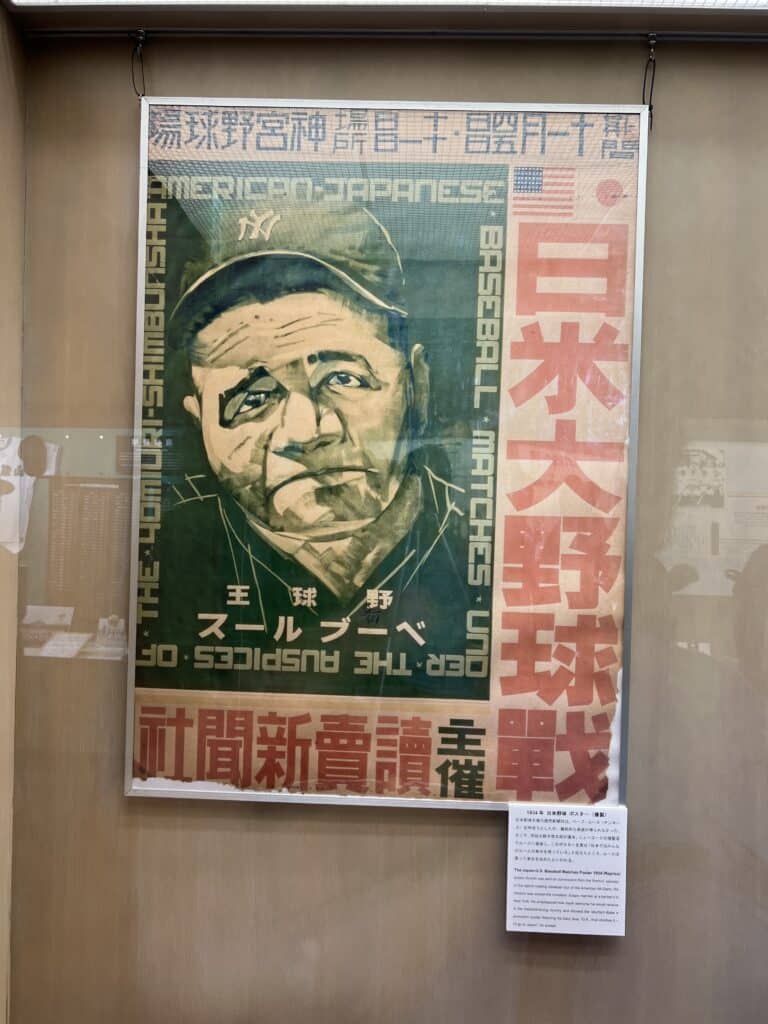
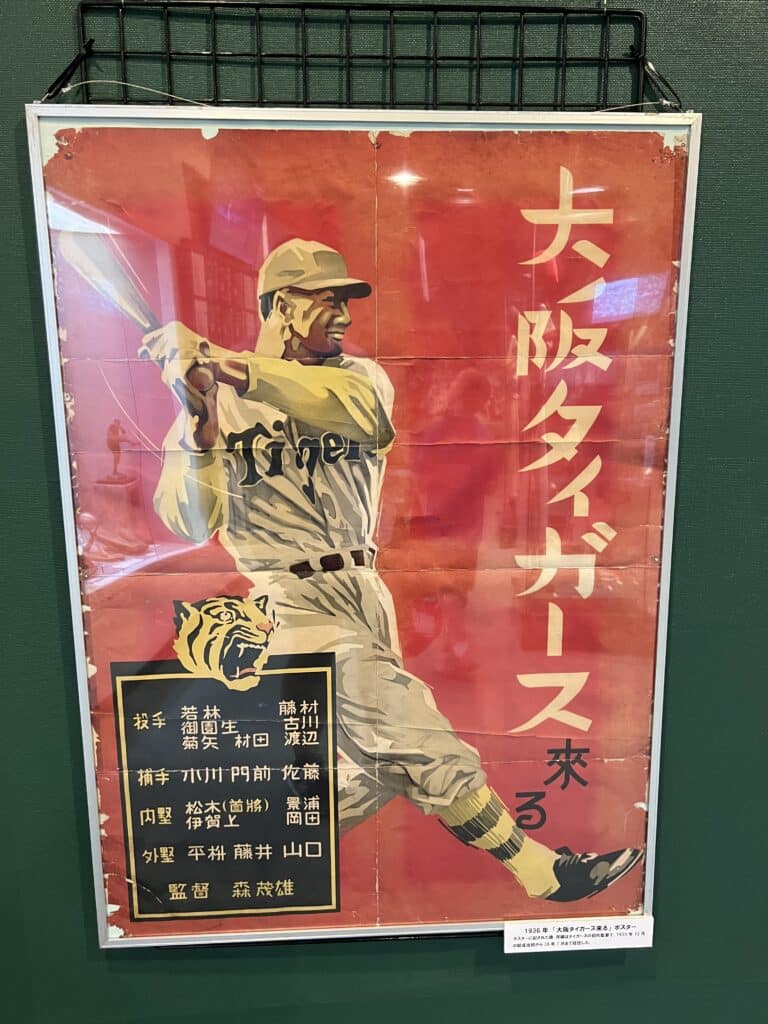
There is baseball memorabilia galore in the museum, but just like in Cooperstown a visit would not be complete without a perusal of the plaque gallery, featuring those enshrined in Japanese baseball immortality.
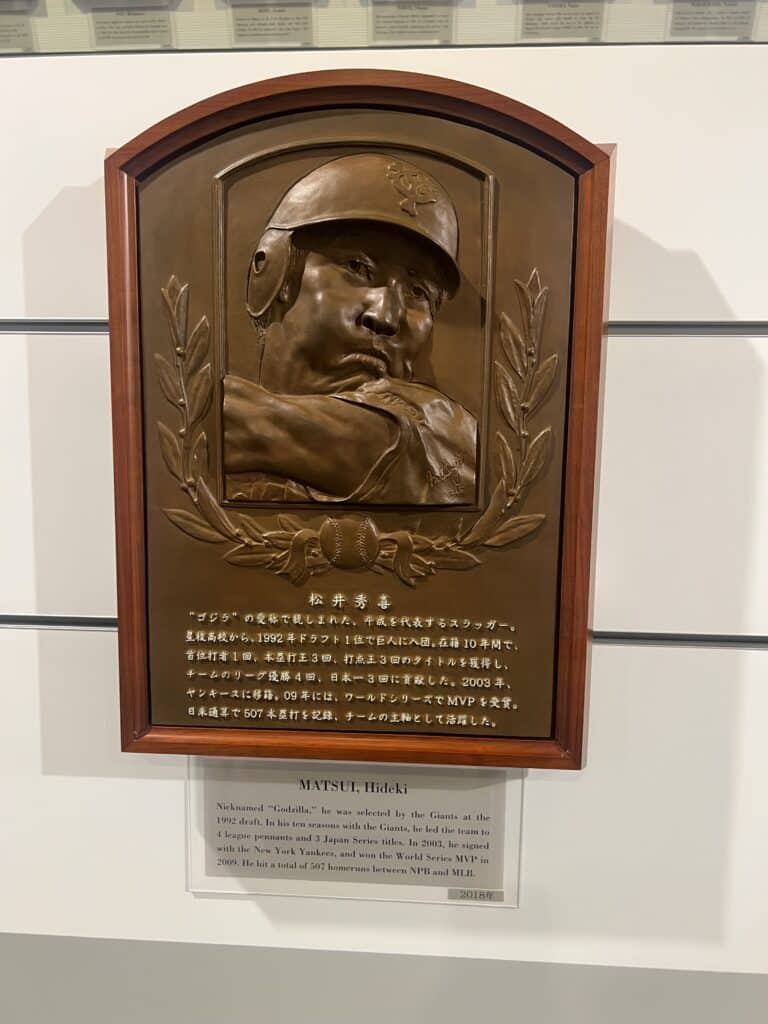

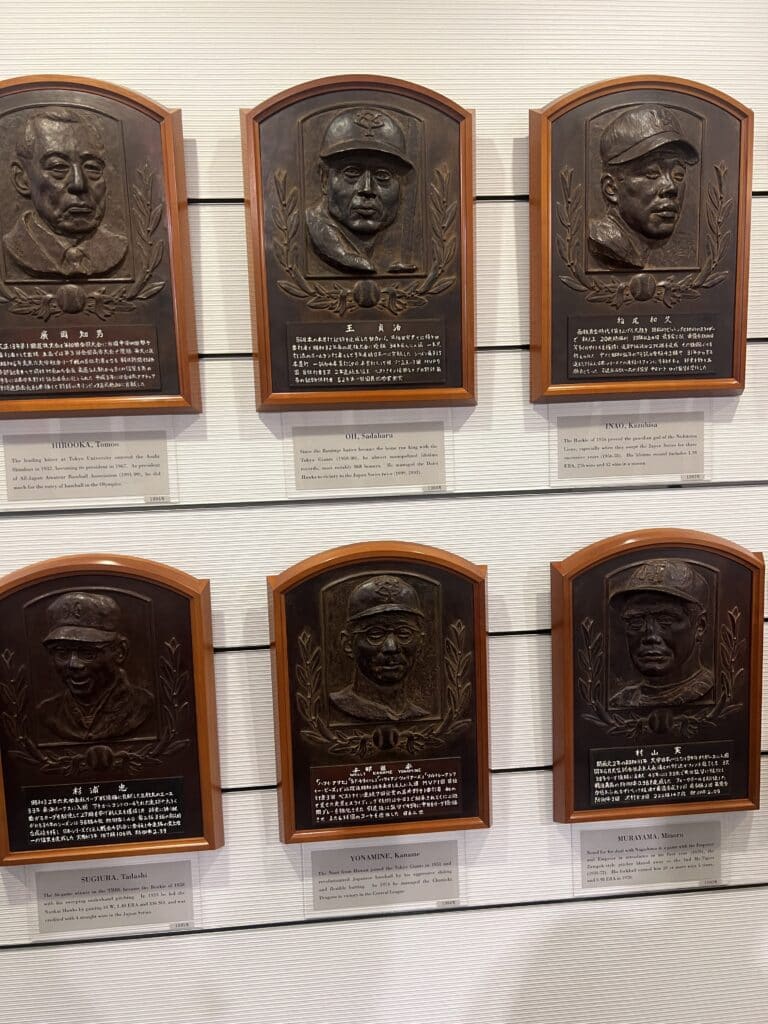
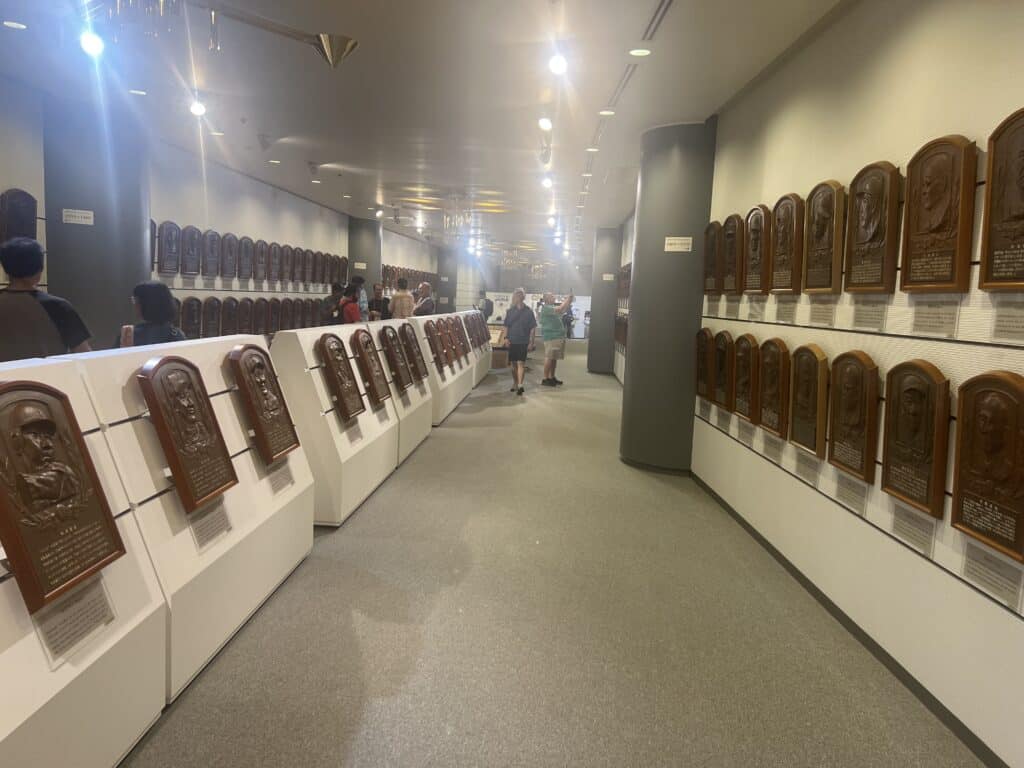
In addition to plaques honoring the 219 inductees, there is much more. There is, for example, a section on amateur baseball, with trophies, photographs, and other items about baseball at the high-school, university, club, rubber (baseball played with a hard rubber ball), and women’s levels. Another section deals with the history of baseball and how it developed in both the United States and Japan, including records of U.S. – Japan professional competitions since 1908.
In a theater, visitors can watch footage of NPB all-star games, past Japan Series, and other memorable games. There are areas for exhibitions and special events, as well as a library said to have approximately 50,000 items, including books, magazines and newspapers. One must make a reservation in advance, though, to access the library and its holdings.
In addition, there is a small interactive exhibit where children can take a swing at a “virtual” pitch from famous Japanese players.
Of course, the Hall displays memorabilia from the current 12 NPB teams, and there are also links to the American game. Horace Wilson, a teacher credited with introducing baseball to Japan in 1872, is an inductee. Another is Lefty O’Doul – the one-time National League batting champion, long-time manager of the minor-league San Francisco Seals, and an unofficial goodwill ambassador to Japan both during and after World War II.
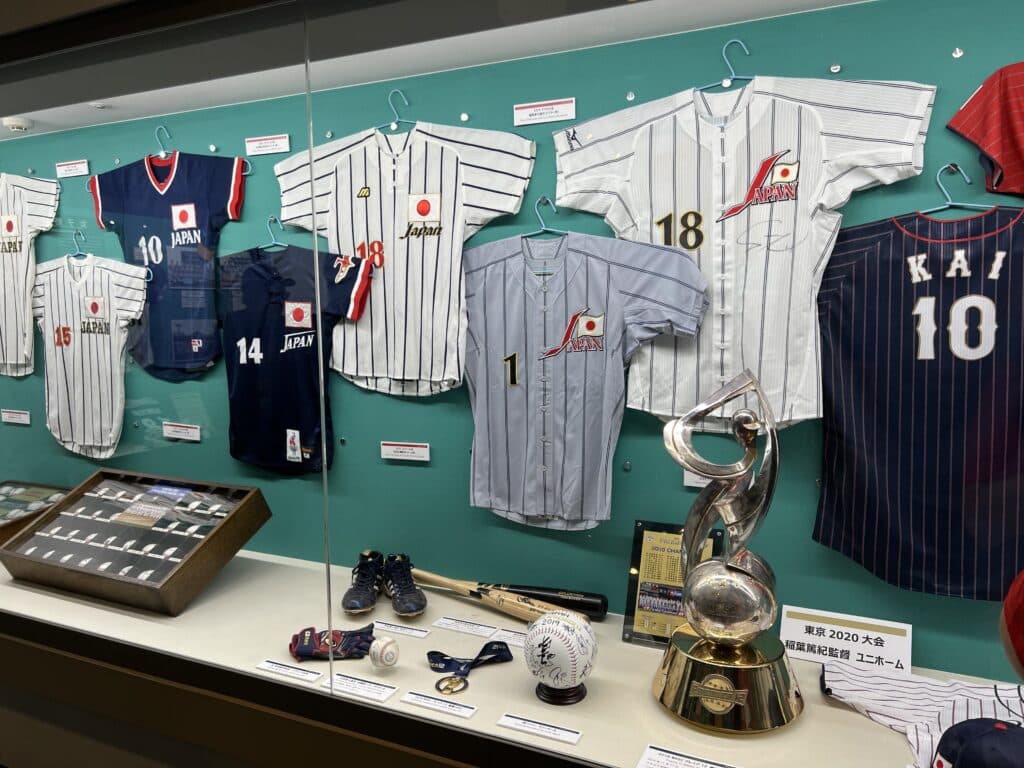

Other items on display include bats used by Jackie Robinson and Hank Aaron, a cap worn by Ken Griffey, Jr., tickets to games when U.S. teams played in Japan, lots of Shohei Ohtani items, and the aforementioned poster highlighting Babe Ruth’s visit with the American team in 1934. It is said that that tour was a big factor in boosting enthusiasm for starting a Japanese professional league, which came about two years later. In fact, the All-Japan team in 1934 later became the Yomiuri Giants.
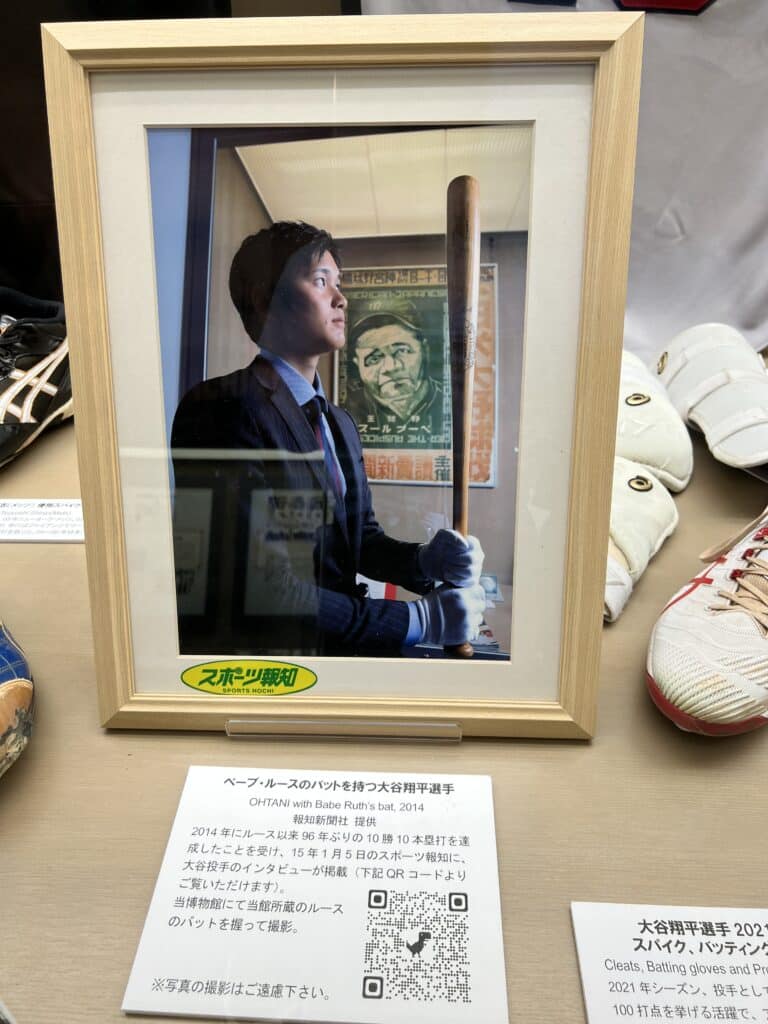
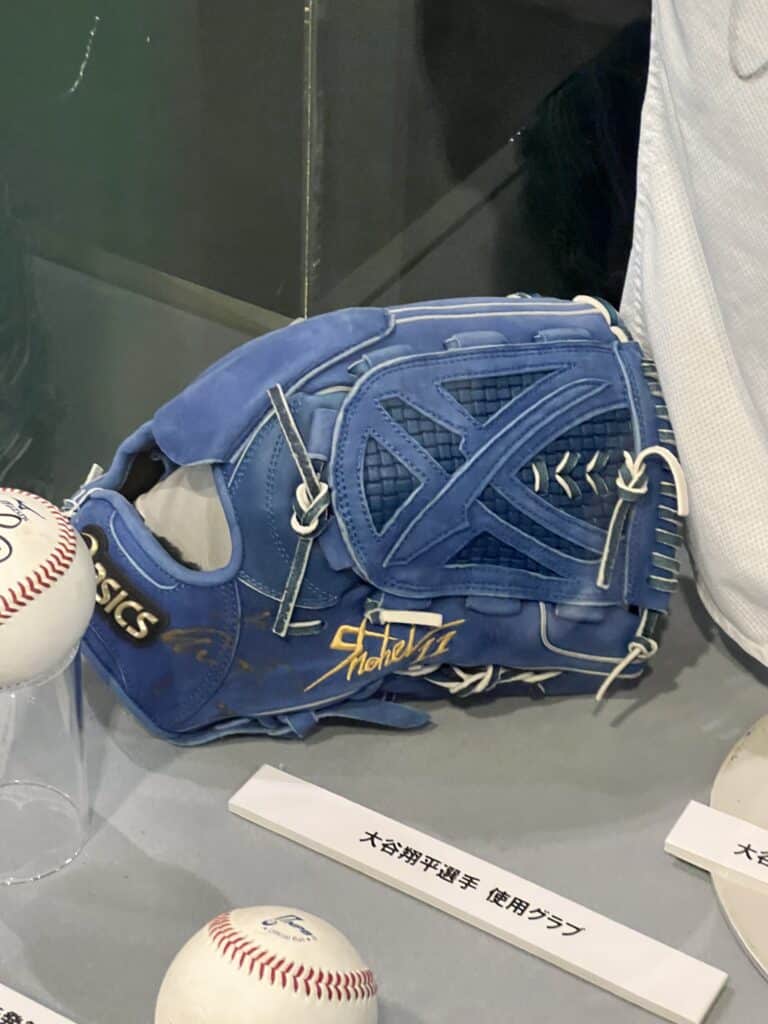
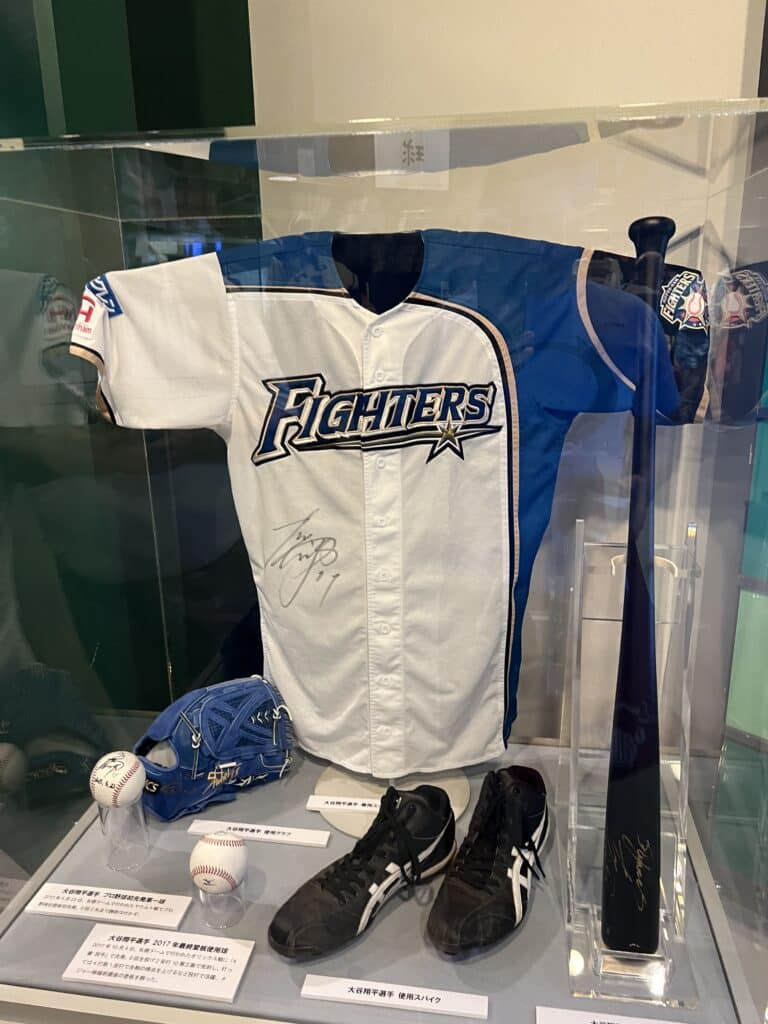
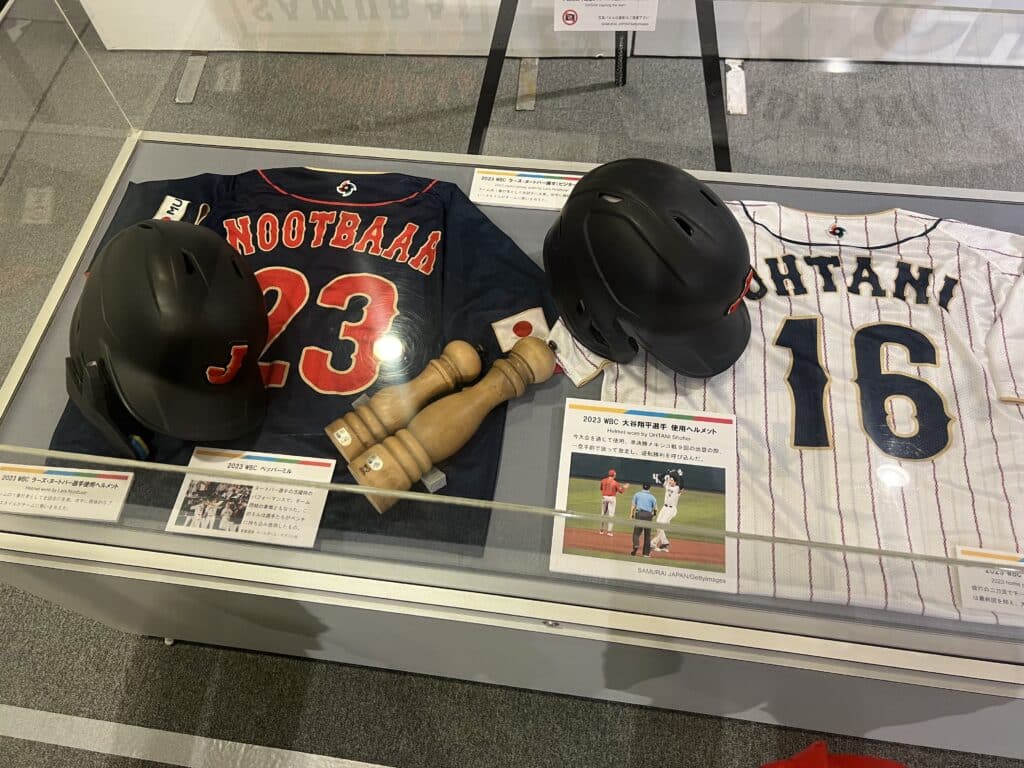
Among the many displays is one dedicated to Sadaharu Oh, the all-time home run leader with 868. It includes his Giants uniform, as well as the samurai sword he used to practice his swing by slicing through pieces of paper hung from the ceiling. Yutaka Fukumoto, who holds the Japanese record for stolen bases at 1,065, and Sachio Kinugasa, who played in a record 2,215 consecutive games, have displays nearby, as well.
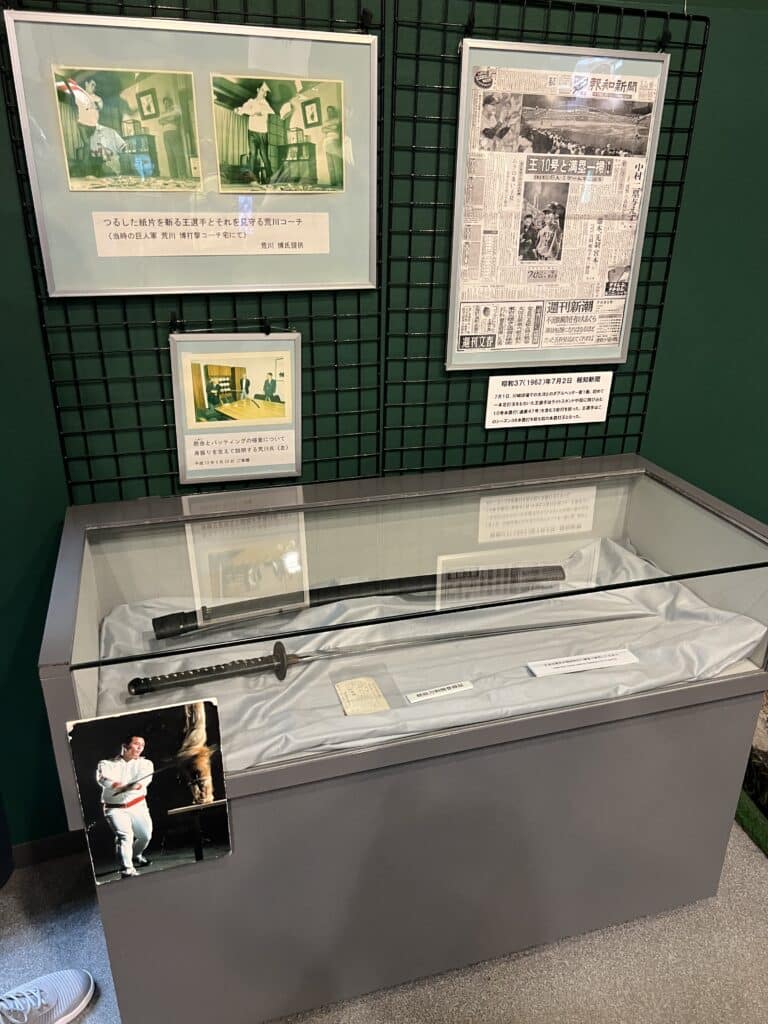

Also in the Hall are monuments memorializing professional and non-professional players killed during World War II.
Visitors interested in purchasing souvenirs – books, official NPB game balls, Japanese scorebooks, Hall of Fame plaque postcards, and more – can get them from vending machines in the lobby and basement.

The Hall of Fame and Museum is open Tuesday through Sunday throughout the year, except for December 29 through January 1. It is also open Mondays during spring and summer school vacations, national holidays that fall on Mondays, and Mondays when the Yomiuri Giants play at the Tokyo Dome.
Normal hours of opening are 10am – 5pm. When a professional baseball game is held at the Tokyo Dome, the Hall stays open until 6pm.
As of February 2024, admission costs are:
- Adults: 600 yen (500 yen per person if in a group of 20 or more)
- High school and university students over the age of 15: 400 yen
- Elementary and junior high school students aged 6-15: 200 yen (150 yen per person if in a group of 20 or more)
- People aged 65 or older: 400 yen
Visitors should refrain from drinking and eating inside the museum. Photographs can be taken without permission, if for private use only.
The Hall of Fame and Museum is situated in Tokyo Dome City (attached to the Tokyo Dome), which is located at 1 Chome-3-61 Koraku, Bunkyo City, Tokyo 112-0004, Japan.
One can reach it via public transportation. The nearest train/subway stations are:
- JR Chuo Line, Sobu Line (Suidobashi-Station, 5 minutes on foot)
- Toei Subway Mita Line (Suidobashi-Station, 5 minutes on foot)
- Toei Subway Oh-edo Line (Kasuga-Station, 8 minutes on foot)
- TokyoMetro Marunouchi Line (Korakuen-Station, 5 minutes on foot)
- TokyoMetro Nanboku Line (Korakuen-Station, 5 minutes on foot)
For further information about access, go to this link.
